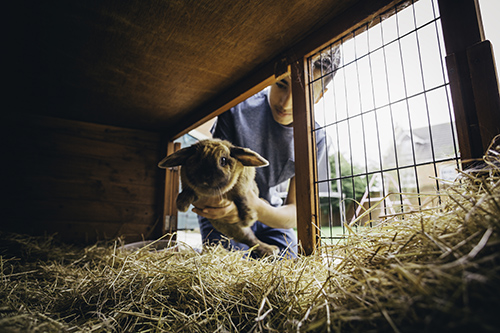Four Frequently Asked Questions about Calf-Manna for Rabbits
Mar 01, 2021

Calf-Manna has been fed to many species on the farm and in the barn during its 80-year history. It has become a go-to solution for many rabbit breeders, helping to solve a wide variety of problems and get their show bunnies ready to do their thing. A quick internet search reveals a great deal of interest in Calf-Manna by rabbit owners.
Here are the four common questions and concerns among rabbit owners who are considering using Calf-Manna for their rabbits:
There are many sizes and breeds of rabbit as well as differences in age. Our feeding directions (1 tablespoon for lactating does and large breeds and 1 teaspoon for growing rabbits and small breeds) should be considered the maximum rates, and can be adjusted based on breed, age, and production level. Calf-Manna is available in 10-pound, 25-pound, and 50-pound bags—perfect for any size rabbitry.
Stay within the feeding guidelines mentioned above and see the difference with your rabbits!
To learn more about feeding rabbits, stop by your local Co-op. Find the location nearest you here.
Here are the four common questions and concerns among rabbit owners who are considering using Calf-Manna for their rabbits:
- What is the proper feeding rate for a rabbit?
There are many sizes and breeds of rabbit as well as differences in age. Our feeding directions (1 tablespoon for lactating does and large breeds and 1 teaspoon for growing rabbits and small breeds) should be considered the maximum rates, and can be adjusted based on breed, age, and production level. Calf-Manna is available in 10-pound, 25-pound, and 50-pound bags—perfect for any size rabbitry.
- Can feeding Calf-Manna cause soft feces in my rabbits?
- How should I feed Calf-Manna?
- Is there a place for Calf-Manna in a regular “maintenance” rabbit diet?
Stay within the feeding guidelines mentioned above and see the difference with your rabbits!
To learn more about feeding rabbits, stop by your local Co-op. Find the location nearest you here.